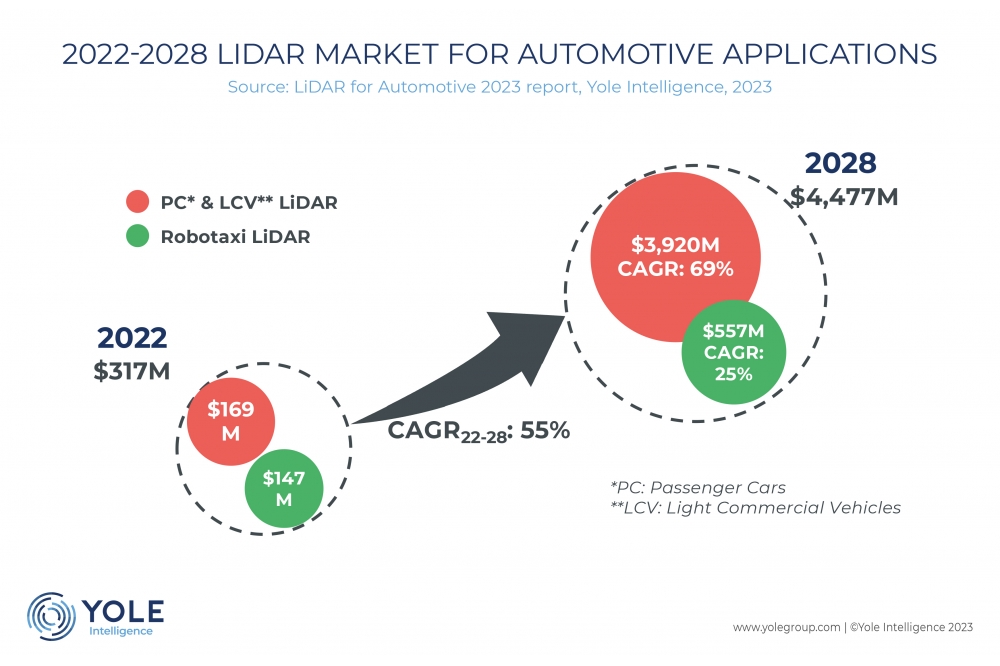Automotive LiDAR market to reach $4.5B in 2028

Chinese OEMs revolutionising the automotive industry through LiDAR tech, says Yole report
Yole Intelligence has been following the LiDAR market since 2019. From the start, it found that the LiDAR market for robotaxis has always been higher than that for passenger cars. Indeed, the first robotaxi services were put in place in August 2016 with NuTonomy in Singapore, and the next steps were taken in 2017 with the entry of Waymo and Cruise, which started in Phoenix, AZ, and San Francisco, CA.
In its LiDAR for Automotive report, 2023 edition, the Yole forecasts that the global LiDAR market for automotive will grow from $317 million in 2022 to nearly $4.5 billion in 2028. It also highlights the emergence of Chinese players, such as DiDi, AutoX, and Baidu. These companies are opening new services in various cities worldwide, pulling the LiDAR market for robotaxis far ahead of that for passenger cars.
The passenger car (PC) and light commercial vehicle (LCV) market (show in red in the graph above) has gained 144 design wins since 2018; 114 of these are scheduled for 2023 or soon thereafter.
Pierrick Boulay, senior analyst, lighting and ADAS systems at Yole Intelligence, said: “In 2022, we were at a crossroads as these two markets generated almost the same revenue: $169 million for passenger cars and $147 million for robotaxis. However, growth potential differs for these two markets: a 69 percent CAGR between 2022 and 2028 for passenger cars compared to a 25 percent CAGR for robotaxis in the same period.”
For Pierrick Boulay: “Regarding the robotaxi market, few players are generating significant revenue. Hesai Technology controls the market with a 67 percent market share as their LiDARs can be found in most robotaxis, such as Cruise, Aurora, Apollo, DiDi, Pony.ai, and AutoX. Indeed, Hesai Technology replaced Velodyne, which previously led this market.”
In the passenger car market, things are evolving rapidly and are expected to change again in the coming years. Since 2018, Valeo has been a clear leader in the market as they supplied most of the cars released with LiDAR, thanks to partnerships with Audi, Honda, and Mercedes.
In 2022, the market changed dramatically as Innovusion, which was relatively unknown before, set a high mark with more than 56,000 LiDARs shipped to Nio. Valeo was close to Innovusion, and the volume difference was only a few hundred units.
One of the most significant changes was the entry of Hesai Technology, ranked 3rd, and the 4th place of RoboSense. These Chinese companies only started to ship in volume in 2022 and have partnerships with most Chinese OEMs. The remaining players share the final 11 percent of the market with 8 percent for Livox due to their partnership with XPeng.
According to Yole Intelligence, in 2023, Hesai Technology and RoboSense are expected to lead the LiDAR market for passenger cars, taking the first two places. This is a big win for Chinese players, but Valeo is still in good shape as it communicated on a one-billion-dollar order for their Scala 3.


































